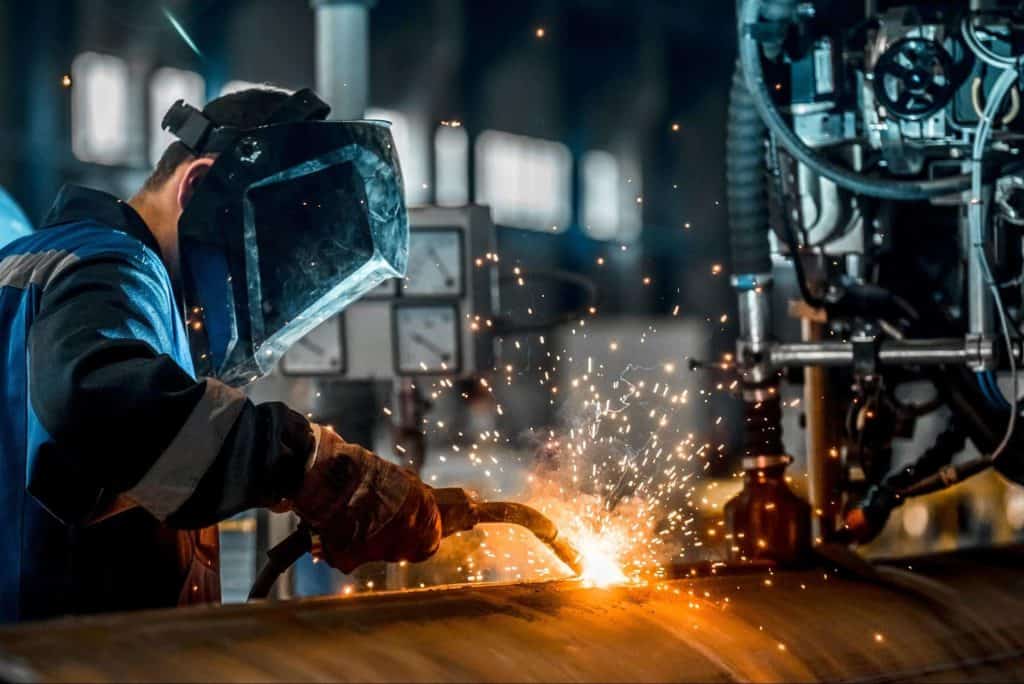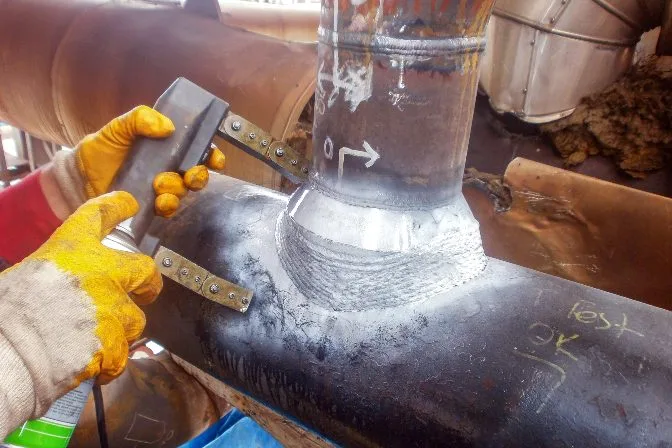Trusted Houston Welding Inspection for Conformity and Security Specifications
Trusted Houston Welding Inspection for Conformity and Security Specifications
Blog Article
Exactly How Welding Evaluation Functions: A Comprehensive Analysis of Methods, Standard, and the Function of Assessors in Making Sure Architectural Stability and Security
Welding inspection is a necessary component in the building and construction and production markets, where the integrity of bonded joints is critical to safety and security and reliability. Inspectors are tasked with not just evaluating weld top quality against rigid requirements however also interpreting complex codes and standards.
Value of Welding Evaluation
Welding assessment is essential in making certain the stability and safety and security of welded frameworks, with research studies suggesting that up to 70% of structural failures can be mapped back to inadequate welding methods. This highlights the significance of organized evaluation procedures throughout the welding lifecycle, from preparation to completion. Efficient inspection not only recognizes defects prior to they escalate right into considerable problems but likewise ensures compliance with industry requirements and policies.

The duty of welding examiners expands beyond plain quality assurance; they are important in protecting public safety and lessening liability for organizations. By executing rigorous evaluation protocols, firms can identify issues such as incomplete combination, splits, or extreme porosity, which can endanger the total strength of a bonded joint. Recurring training and certification of inspectors add to the total high quality guarantee in welding operations, fostering a culture of security and excellence.
In enhancement, welding evaluation plays an essential function in maintaining functional efficiency. Recognizing defects early in the procedure assists in timely rehabilitative actions, lowering pricey rework and task delays. Ultimately, a durable evaluation structure acts as a structure for trusted and long lasting bonded frameworks, guaranteeing they meet both useful and security needs.
Usual Inspection Approaches
Just how can one ensure the top quality of bonded joints throughout the evaluation process? The execution of numerous assessment techniques is essential in assessing weld integrity and recognizing possible problems. Typical approaches consist of Visual Evaluation (VT), which is often the very first line of defense, allowing inspectors to discover surface imperfections such as cracks, porosity, or incomplete blend by visually analyzing the welds.
Ultrasonic Testing (UT) is an additional widely utilized strategy, utilizing high-frequency acoustic waves to recognize inner problems within the weld. This approach is specifically reliable for finding issues that are not noticeable to the naked eye. Radiographic Checking (RT) utilizes X-rays or gamma rays to produce photos of the weld, making it possible for the identification of volumetric issues, such as voids or inclusions.
Magnetic Fragment Examining (MT) and Liquid Penetrant Testing (PT) are also prominent approaches, concentrating on surface problems. MT relies upon magnetic areas to disclose surface and near-surface gaps, while PT entails using a fluid dye to highlight flaws. Each of these methods offers an unique function, guaranteeing the extensive examination of welded joints and securing architectural stability and safety.
Standards for Evaluating Welds
The analysis of welds is led by a set of well established standards that make sure both capability and security in bonded structures. These standards include numerous variables, consisting of weld dimension, account, and infiltration, which need to satisfy specified requirements. Conformity with market codes, such as those set by the American Welding Society (AWS) or the American Society of Mechanical Engineers (ASME), is important in determining the reputation of a weld.

Weld metallurgy plays a crucial role; see here now the evaluation takes into consideration the fusion top quality between base and filler products, as well as heat-affected zones. The overall mechanical properties, consisting of tensile stamina and ductility, have to meet the requirements developed for the certain application. Jointly, these criteria guarantee that welds not just fulfill aesthetic requirements but likewise perform dependably under operational conditions.
Duty of Welding Inspectors
A welding assessor's competence is pivotal in guaranteeing the stability and top quality of bonded frameworks. These professionals play a critical function in the construction and building and construction procedure by verifying that welding operations abide by established specs and requirements. Their obligations include a detailed series of tasks, consisting of aesthetic examination of welds, examining welding documents, and conducting non-destructive screening (NDT) techniques such as radiographic or ultrasonic screening to recognize problems.
Welding inspectors are also in charge of interpreting welding codes and requirements, making certain that the welders are certified which the materials used meet the necessary demands - Houston Welding Inspection. They have to keep meticulous documents of assessments, which act as paperwork of compliance and quality control. Moreover, these examiners frequently team up with engineers and job supervisors to attend to any kind of concerns that develop throughout the welding process, supplying referrals for rehabilitative activities when essential.
In enhancement to technological abilities, efficient interaction is important, as welding inspectors have to convey searchings for plainly to stakeholders and promote training and guidance for welders. Inevitably, their function is important to maintaining safety and dependability in welded structures, adding substantially to the general success of building and construction projects.

Difficulties in Welding Examination
What obstacles do welding examiners encounter in their crucial role? The intricacies of modern-day welding methods and materials existing considerable difficulties for examiners charged with making certain conformity with security requirements and architectural integrity. One main obstacle is the rapid advancement of welding modern technology; examiners should continually upgrade their understanding and abilities to stay effective. This recurring education and learning is important to understanding new materials and processes, which can differ commonly in qualities and demands.
Additionally, examiners typically experience variations in worksite problems that can impede assessment procedures. Factors such as ecological problems, access, and the physical state of the bonded frameworks can make complex complete analyses. Time constraints enforced by job routines can additionally push assessors, possibly impacting the thoroughness of their analyses.
Additionally, the subjective nature of some assessment methods can bring about incongruities in assessments. For example, visual inspections might vary based upon the assessor's experience and viewpoint. To alleviate these difficulties, the fostering of sophisticated non-destructive testing methods and standardized methods comes to be vital - Houston Welding Inspection. Inevitably, getting rid of these challenges is vital for making sure the safety and dependability of bonded structures throughout various sectors.
Verdict
Welding assessment is crucial for maintaining structural honesty and safety in different markets. Via the application of diverse examination methods and adherence to recognized requirements, assessors play a critical More Info duty in making sure and identifying defects conformity with market requirements. The difficulties encountered in this area highlight the necessity for continual improvement in evaluation methods and techniques. Ultimately, effective welding evaluation adds significantly to mitigating dangers and boosting the overall reliability of pop over to this web-site bonded frameworks.
Welding assessment is a necessary element in the building and manufacturing industries, where the integrity of welded joints is paramount to security and dependability.Welding evaluation is essential in guaranteeing the integrity and safety and security of bonded frameworks, with research studies indicating that up to 70% of architectural failings can be traced back to inadequate welding techniques. Their duties include a comprehensive array of jobs, consisting of visual inspection of welds, examining welding paperwork, and carrying out non-destructive testing (NDT) techniques such as ultrasonic or radiographic testing to determine defects.
Welding assessors are likewise responsible for translating welding codes and requirements, making certain that the welders are qualified and that the products used fulfill the needed demands. Inevitably, effective welding inspection contributes significantly to mitigating dangers and enhancing the total dependability of bonded structures.
Report this page